Cyclingnews Verdict
An immediately comfortable time trial helmet that feels aero at all angles
Pros
- +
Comfortable
- +
Magnetic visor is easy to clip on and off
Cons
- -
Whistling at high speeds
- -
Visor cannot be flipped upside down and refitted
You can trust Cyclingnews
When it comes to time trial helmets, POC has made a bit of a name for itself over the past decade. Its Tempor helmet was years ahead of its time when it launched at London 2012 Olympics. It put a revolutionary spin on design and it's enormously popular in the time trial scene for the radical shape that is designed to push airflow past the head and beyond the shoulders. It's said to be extremely aerodynamic in the wind tunnel and when in the ideal TT position. However, as soon as your head moves out of its perfect tucked position, its above-average size can quickly result in a net loss in watts saved.
Enter the POC Cerebel, the brand's 'normal' time trial helmet. It adheres to the bobtail design blueprint which is said to help it remain aero no matter what position your head settles into. So while the title chasers and elite racers might find the Tempor to be the faster of the two, the POC Cerebel is likely the best time trial helmet in POC's range for the vast majority of time trial enthusiasts.
The Cerebel is far from a new helmet; it was launched as far back as 2014, but testament to its performance is how little it has changed in the years since. But how does it perform against the more recently launched competitors, such as Kask's Bambino, Rudy Project's The Wing, Met's Codatronca, Giro's Aerohead and more?
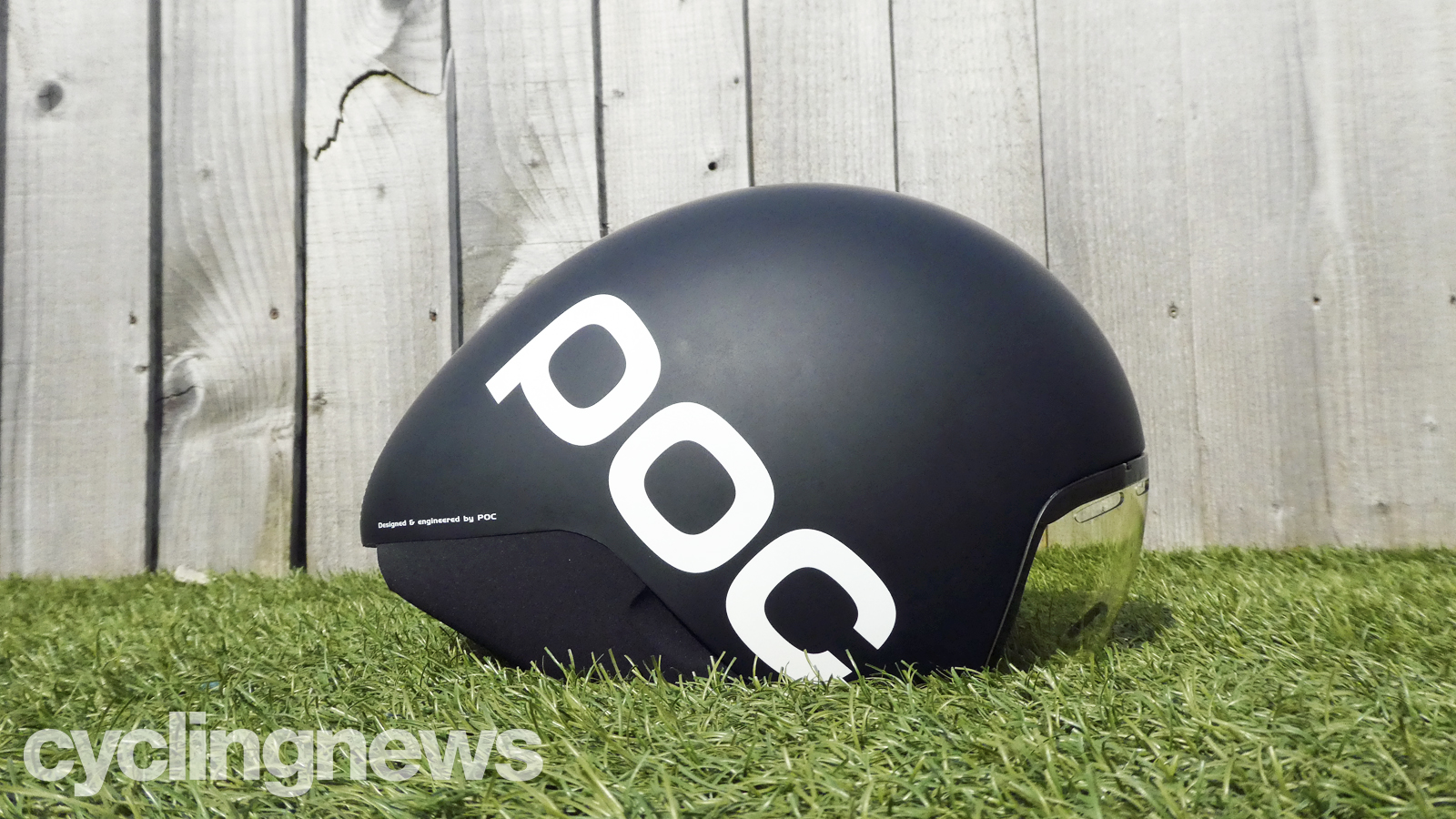

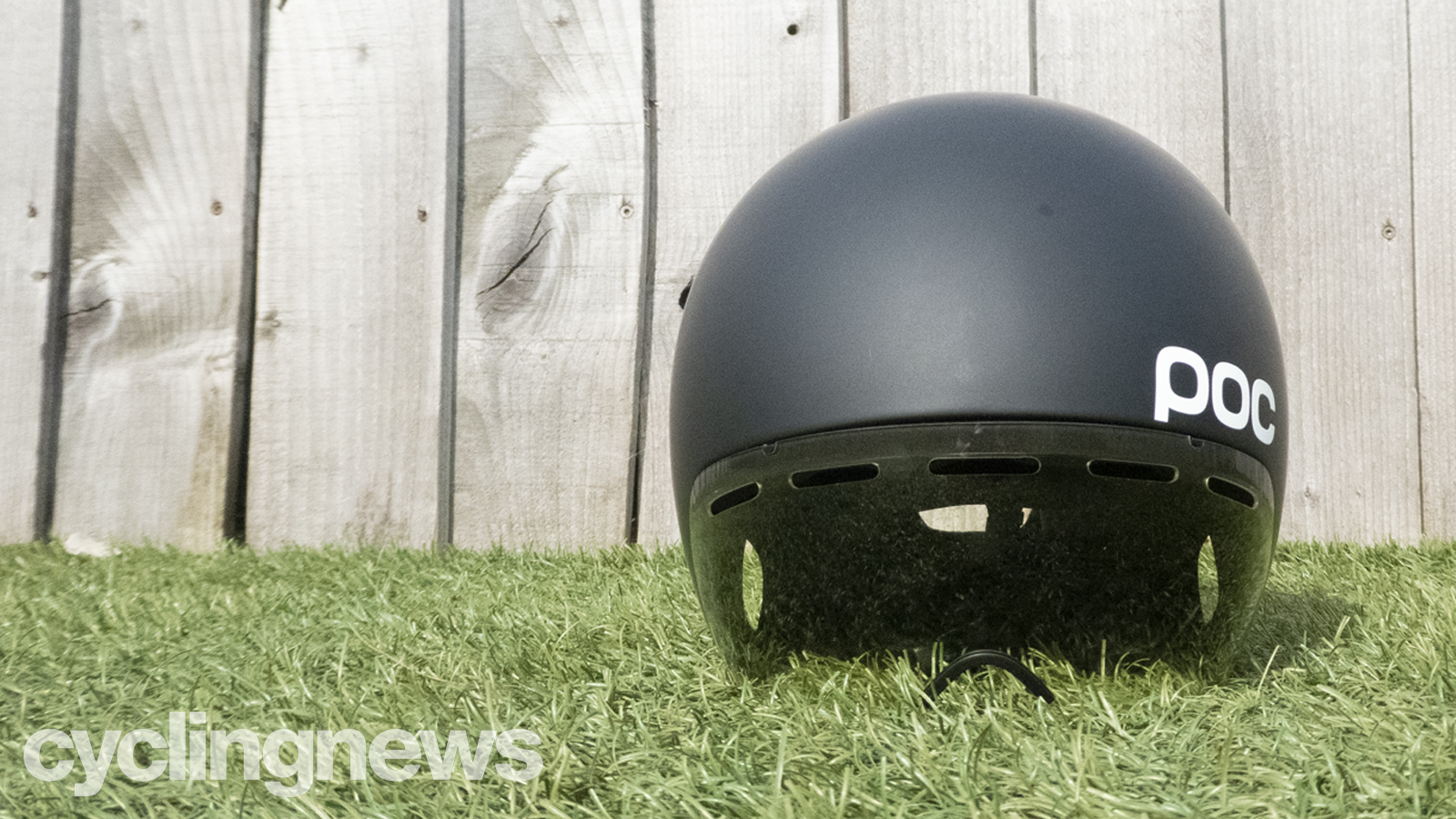
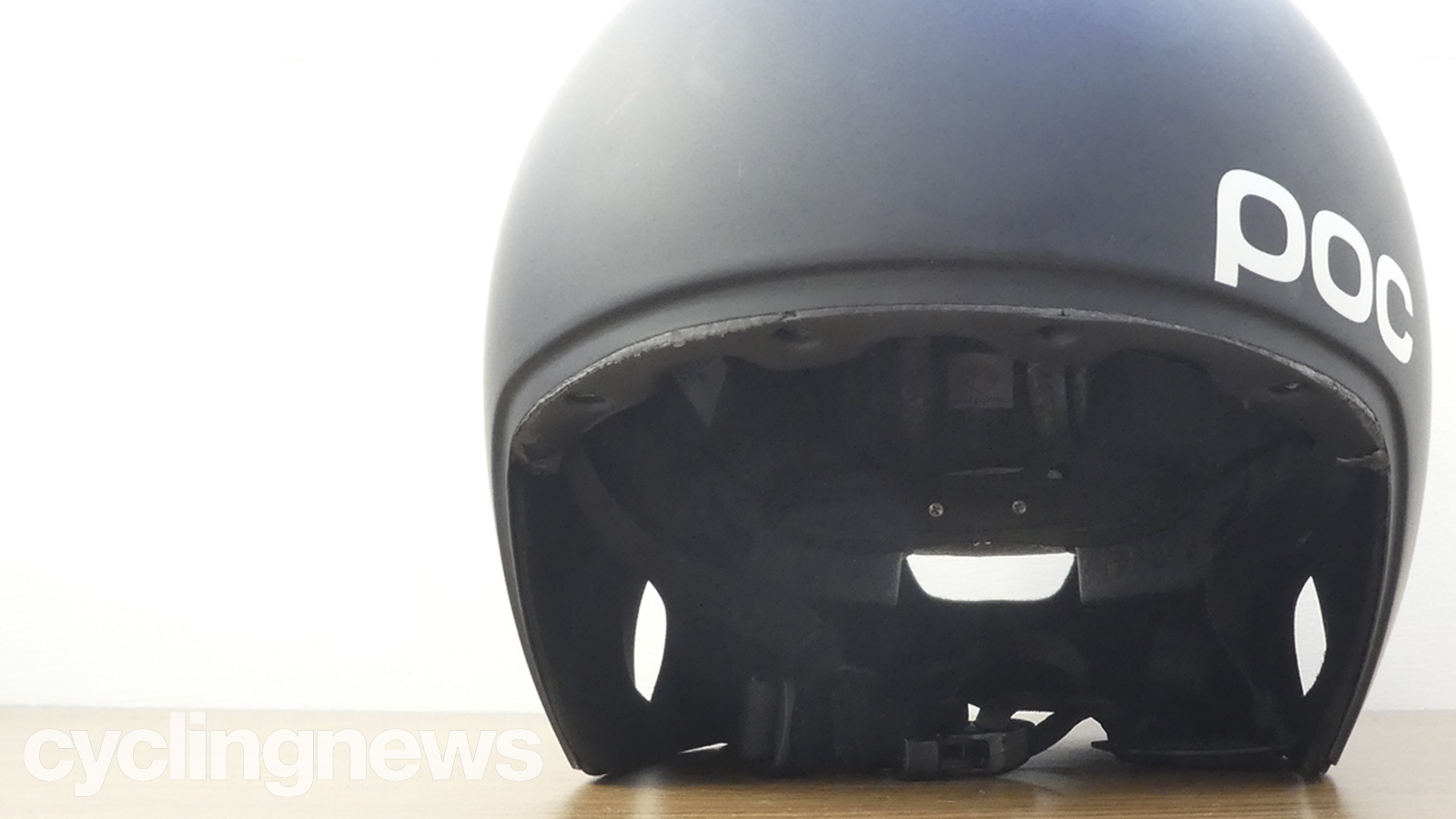
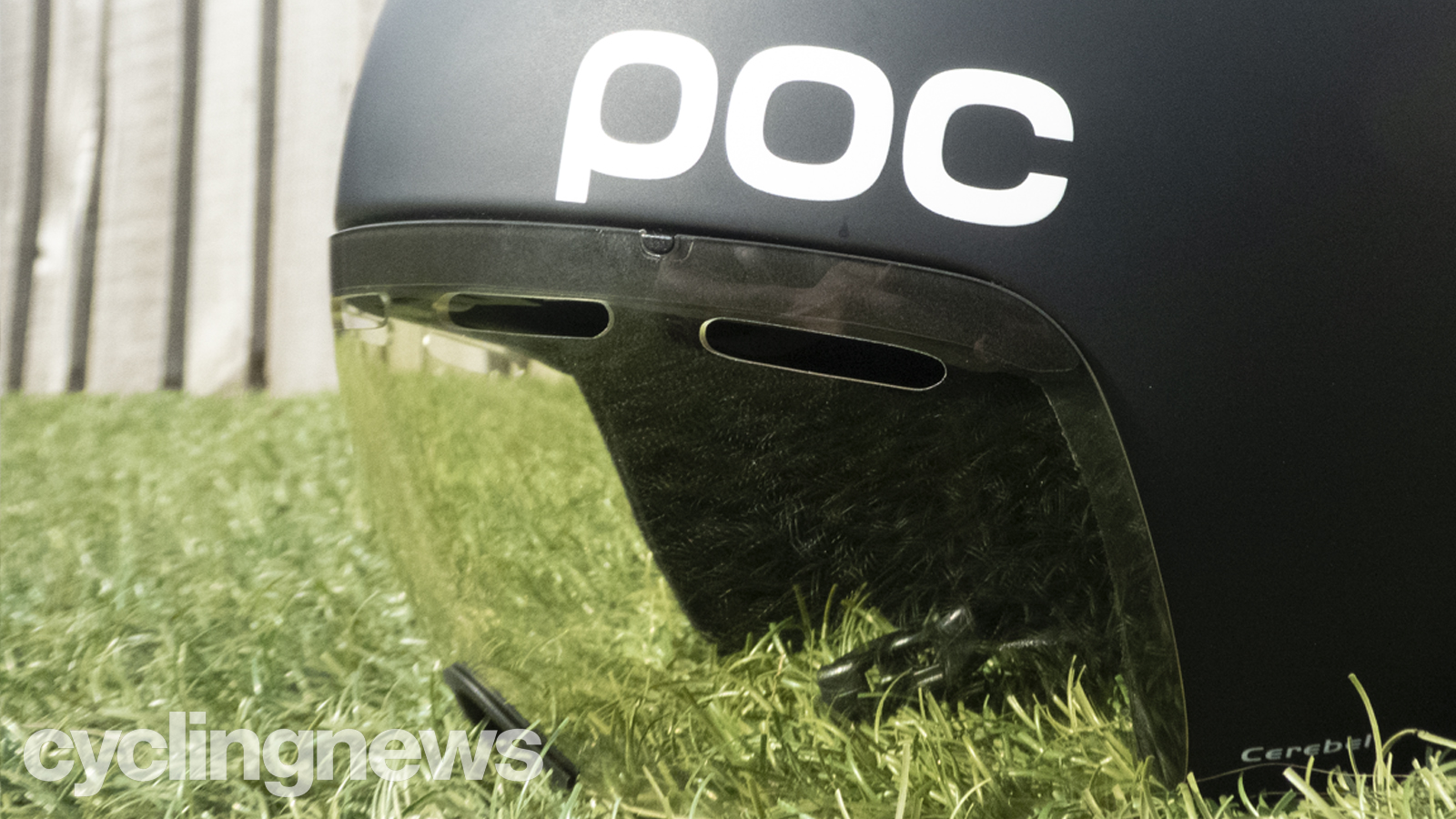
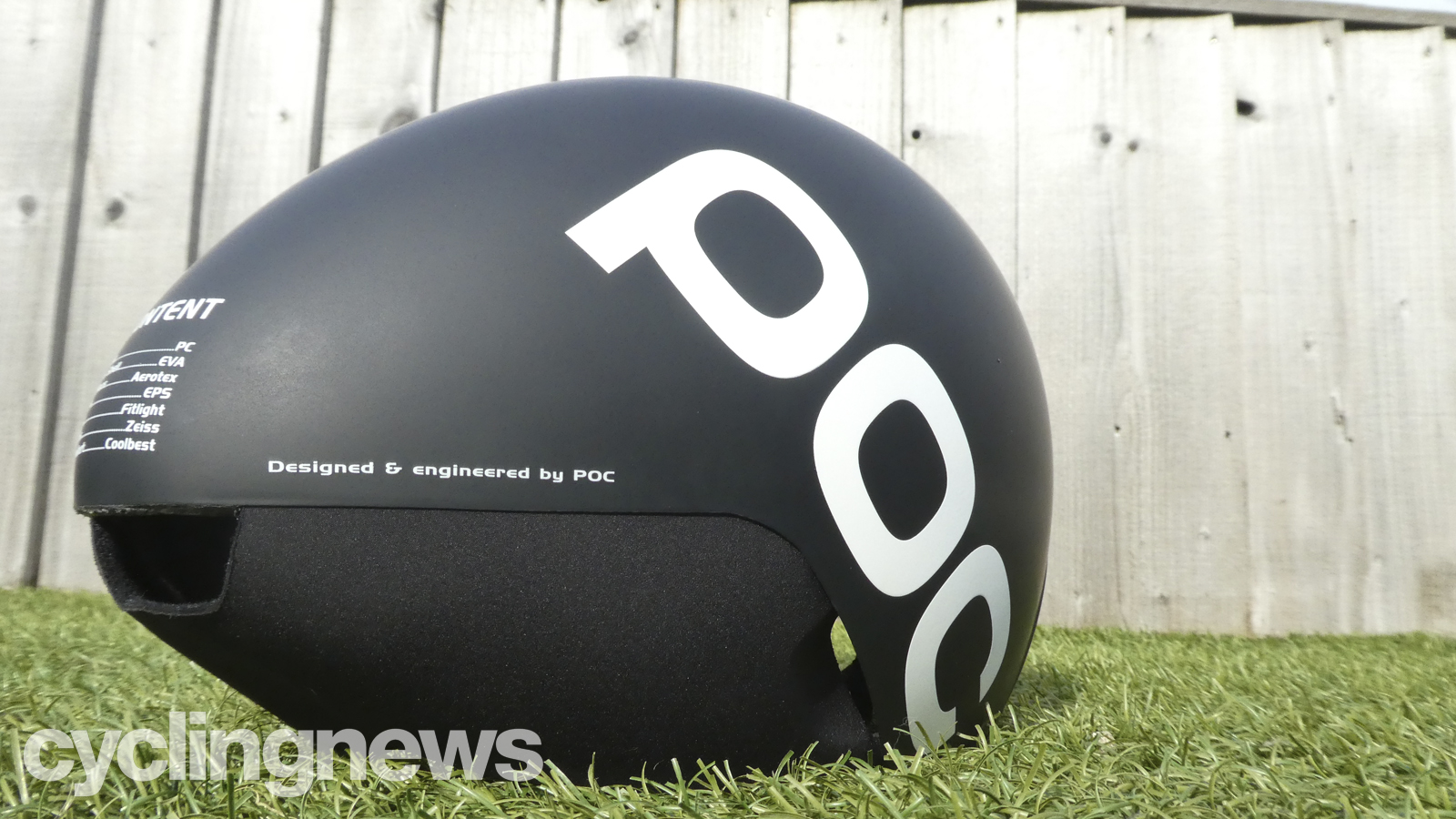
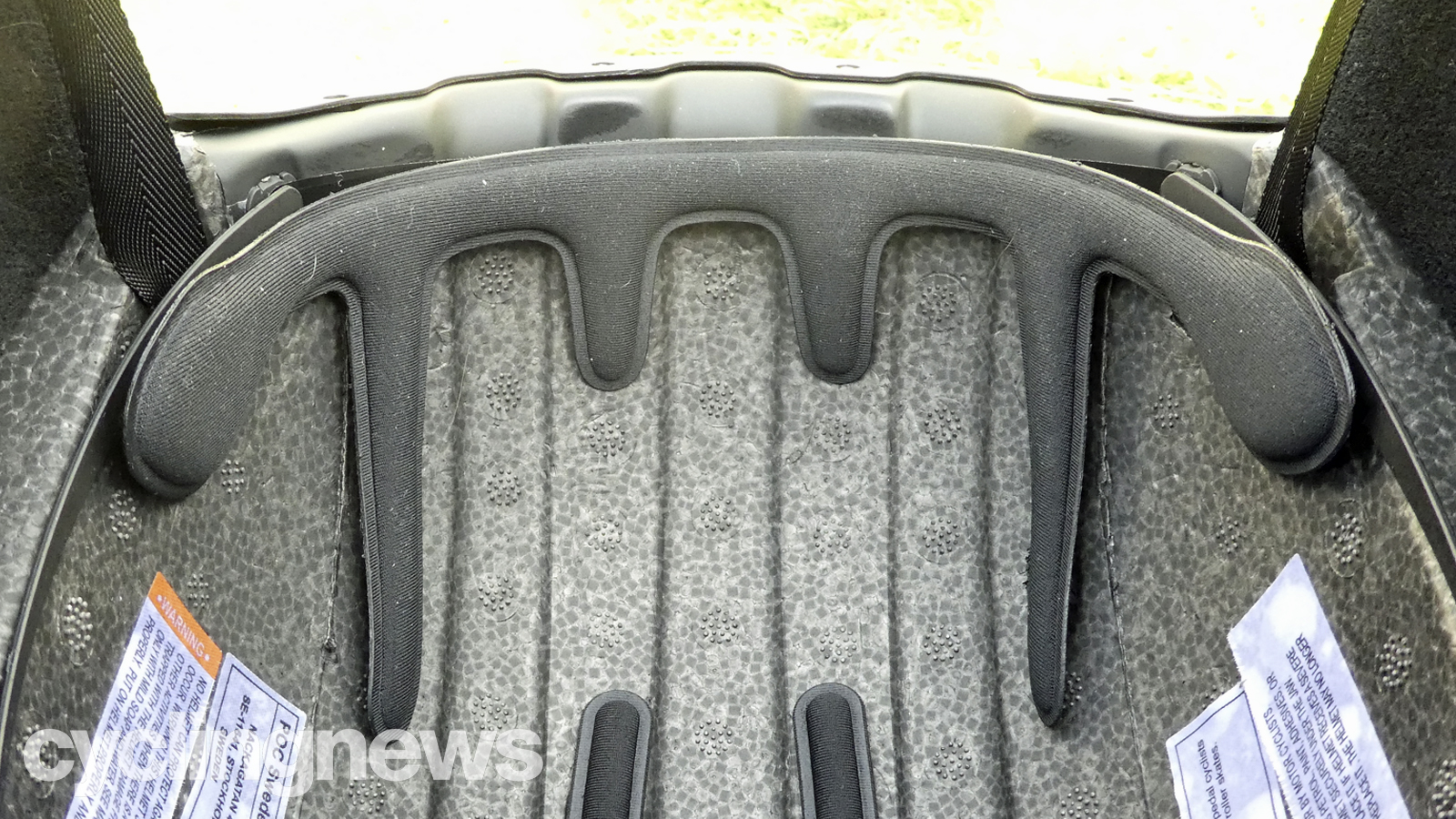
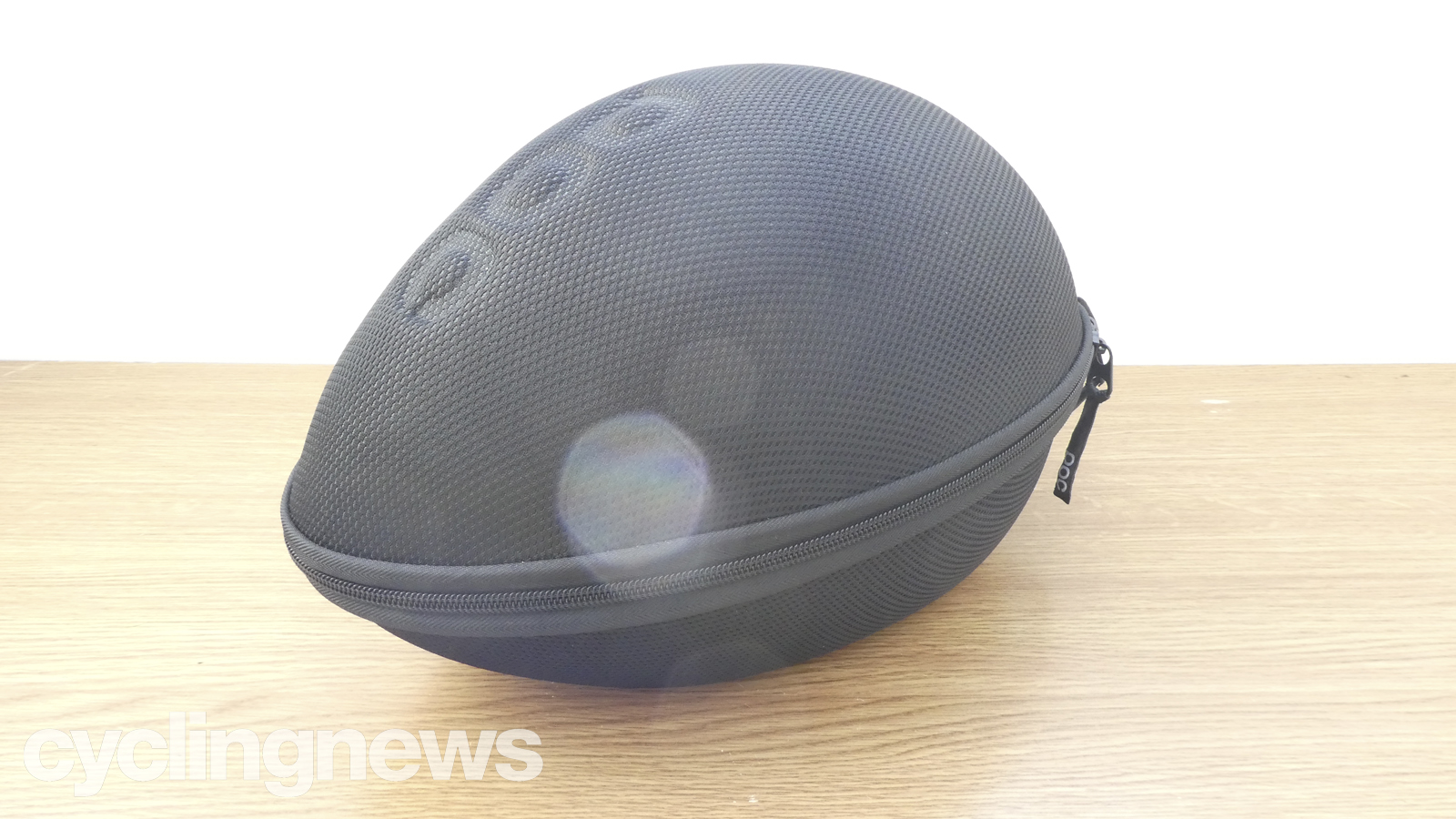
Design
The POC Cerebel is currently available in three colours: Black Navy, Uranium Black, and Hydrogen White, however the helmet has previously been available in a range of other colours, including orange, green and electric blue. Each helmet comes with a single visor made in conjunction with lens specialists Zeiss. Our test helmet is the Uranium Black version, its matte finish has a habit of picking up fingerprints easily, but it does clean up equally quickly.
The size we have is officially a size medium, said to fit anyone with a head diameter between 54 and 60cm (my head is 58cm and the fit is perfect). However, it seems as though this is the only size that POC actually sells. I've been unable to find it anywhere in any other size, including POC's own website.
The main design feature of the POC Cerebel TT helmet is its short, rounded tail. Gone are the days of the long pointy aero helmets of yesteryear; many of today's top lids are truncated and round, and typically offer slightly less aerodynamic performance when holding the 'ideal' head position, but without creating a sail the moment you look to the floor, grab a drink, check over your shoulder, or do any of the other things that most time triallists will do at some point during a race.
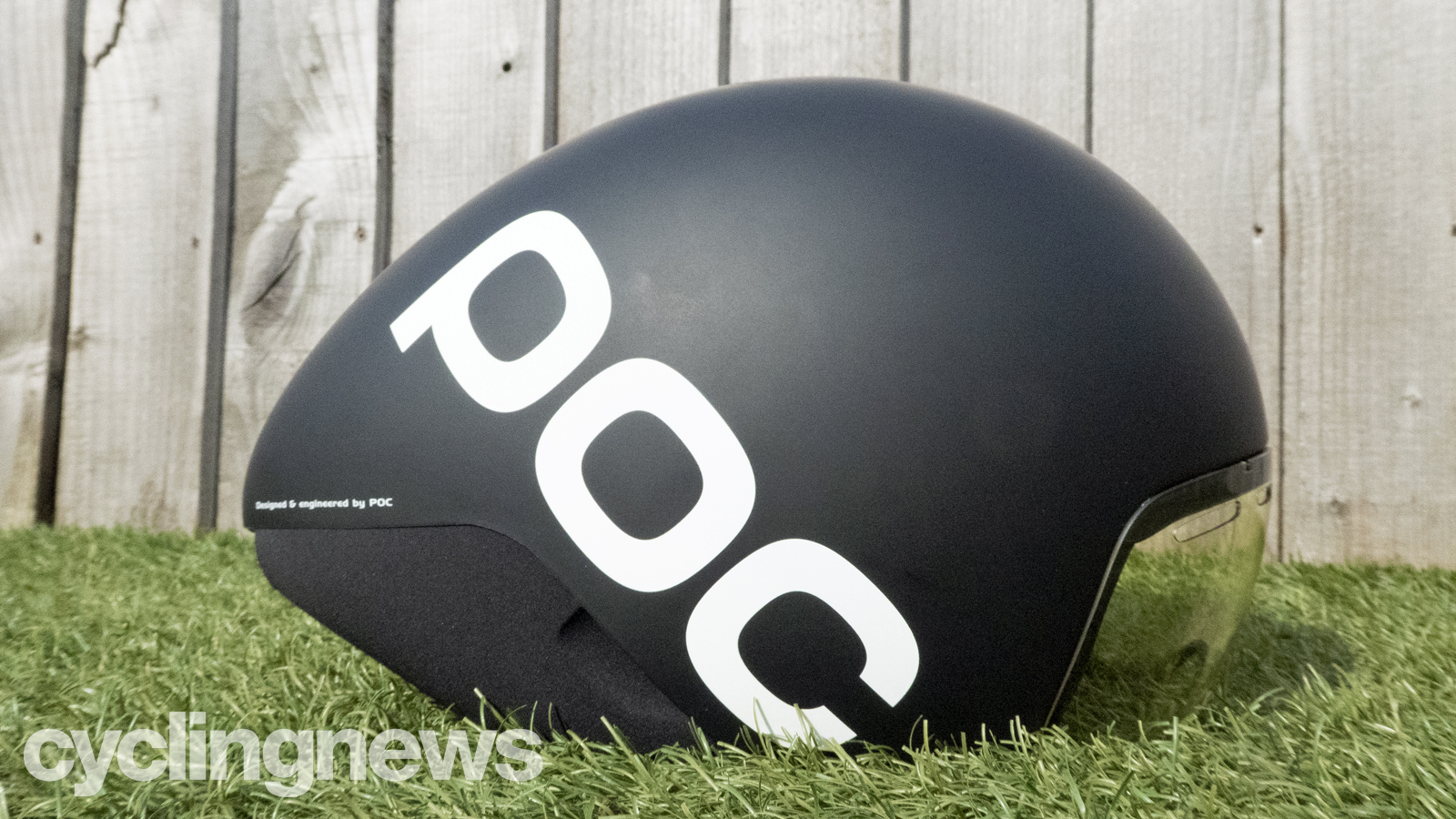
Upfront, the Cerebel gets a magnetic visor, which pops into place with ease. The Cerebel loses points against the likes of the Met Codatronca because the visor cannot be flipped and refitted upside down when cruising. But in all honesty, after a couple of rides in each, it becomes clear that the Cerebel doesn't need this feature. It's so comfortable in operation that there's no real need to remove it. The nose bridge section of the visor is high enough that it doesn't touch the nose of any of our test riders, and even if it did, it's covered with a small plastic bumper that would keep it from digging in.

There are five small vents across the brow of the visor to prevent misting and allow a little bit of airflow, and while these are the only air inlets, the Cerebel hasn't shown itself to be prone to overheating during any of our test rides. Three outlets allow hot air to escape, two of which sit at the ears, while the third sits dead centre at the rear.
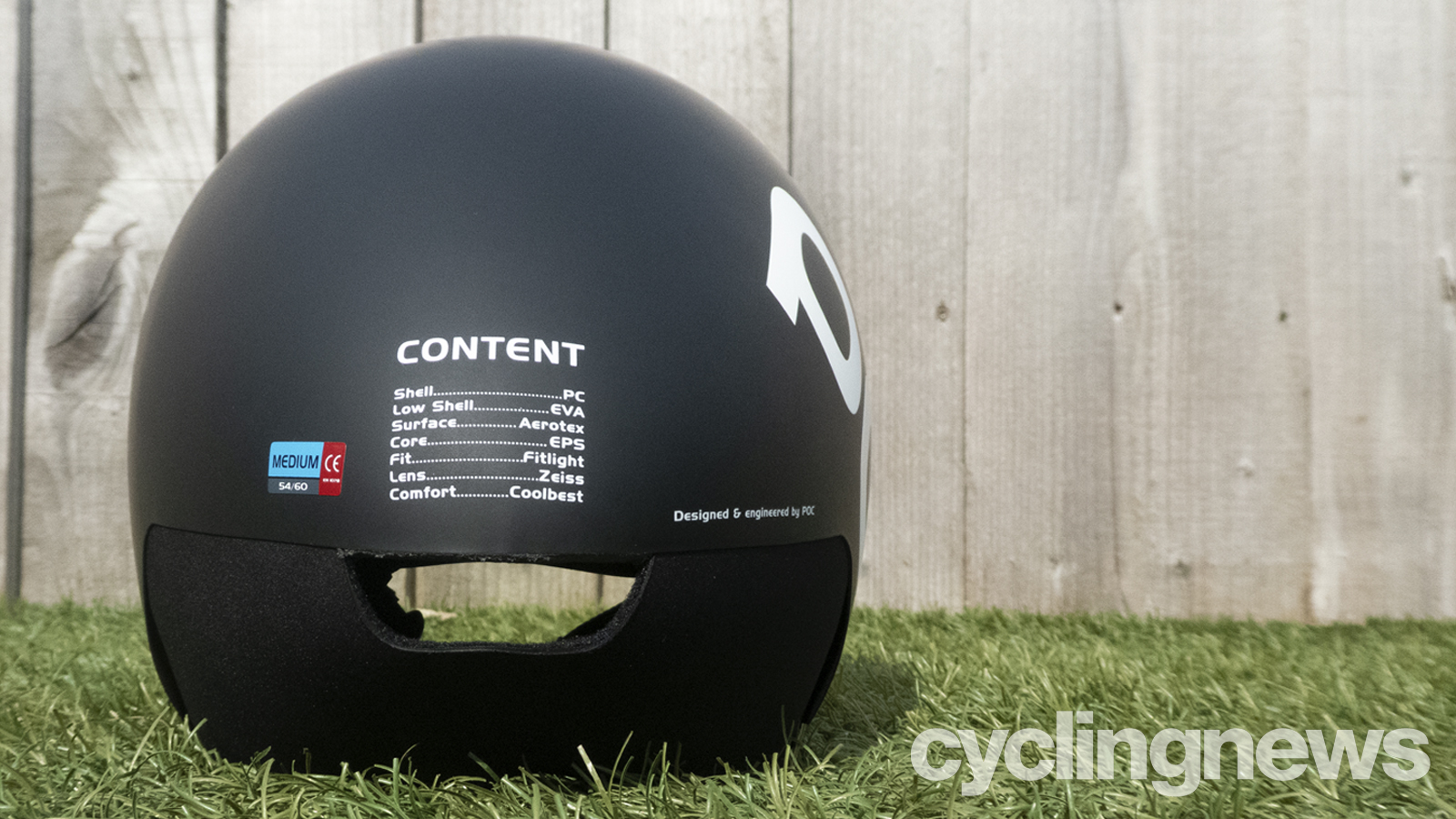
The entire upper of the helmet is made using EPS, the exterior shell's in-moulding offers complete coverage of the EPS beneath and it's finished very neatly. The rear is made using a soft-moulded EVA material that, according to POC, has been coated with an aerodynamic material. This makes sliding the helmet on and off a little easier, and no doubt helps to bring the weight down, too, but it does block access to the retention dial, making getting the helmet tight a pretty fiddly task.

The retention itself is performed using a twist dial, and like most helmets available today, this sits on a cradle that can be adjusted vertically - via five positions - to help with fit.
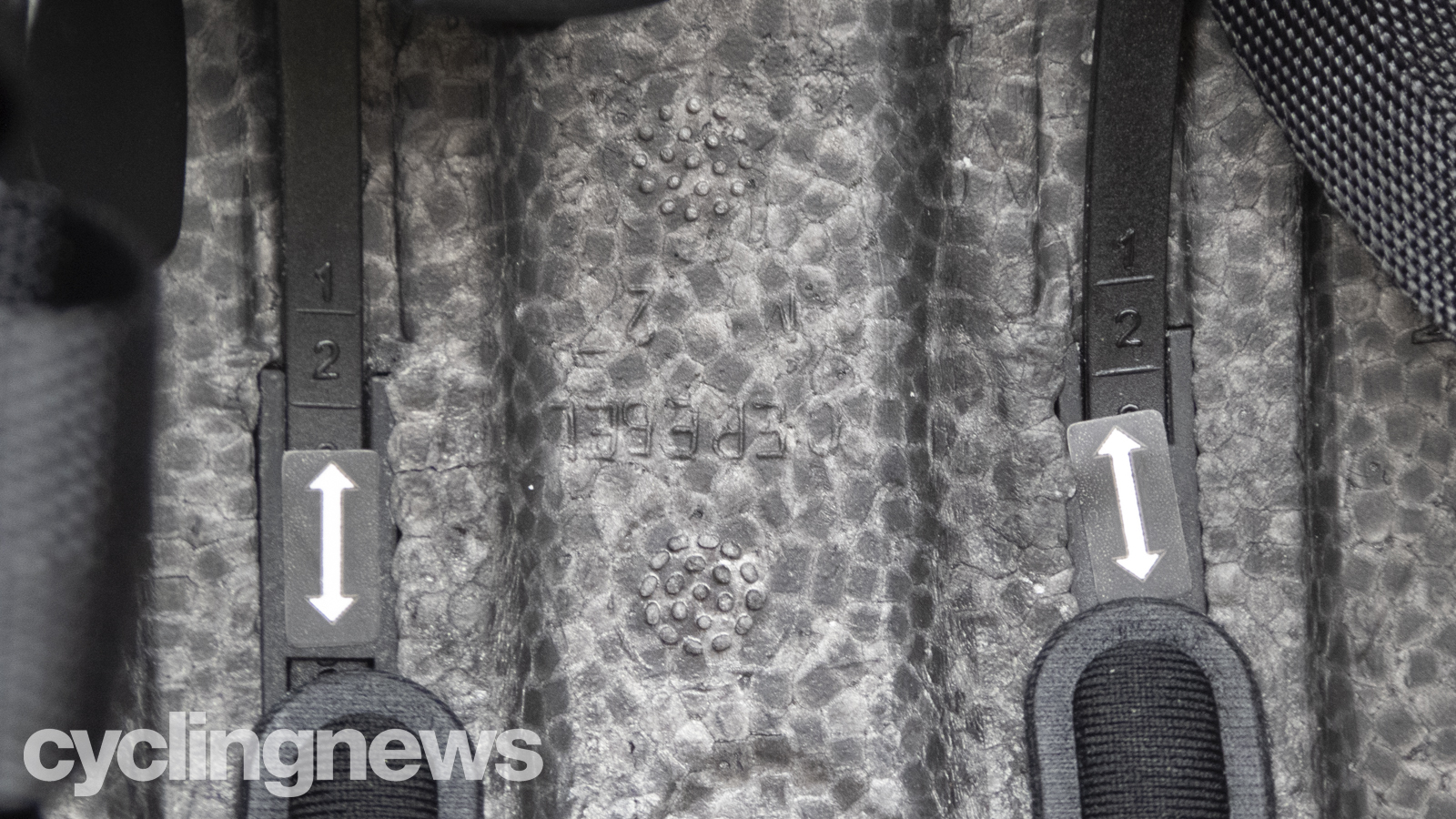
Performance
In the absence of a wind tunnel, my aerodynamics testing has been limited to feel and a couple of back to back tests against both road helmets and other time trial helmets. The overarching feeling backed up by those tests is that, unsurprisingly, it's more than fast enough to warrant switching from an aero road helmet.
In addition, my real-world testing - which was performed with as stable a head as I could muster - was unable to show a consistent, definitive difference between the Cerebel and the Tempor. To me, this reaffirms the theory that the difference is small enough that, when factoring in head movement, the Cerebel would be the better choice.
However, when my head is tucked downward, the Cerebel causes a whistling sound as soon as I get beyond around 45km/h, suggesting it's catching wind unnecessarily. While this might serve as a reminder to keep my head in the ideal position, with the absence of a wind tunnel, I can't quantify whether it's happening in a good position or a bad one. So with that, I'm unsure whether the helmet is singing to the tune of a good rhythm, or telling me to do better. Either way, after 20-odd minutes at full gas, it does become a little tedious.
Of course, one other performance metric by which a helmet ought to be judged is its ability to protect your head in a crash. As you can hopefully understand, my commitment to this review isn't strong enough to want to test this in a real-world situation, but as one would expect, the Cerebel is made to far exceed the necessary helmet safety standards of ISO EN 1078 and CPSC 12.03. It's worth noting that it forgoes any additional rotational impact protection such as the SPIN (Shearing Pad INside) technology found in many of the brand's road helmets.
In terms of comfort, the Cerebel is the best helmet I currently own. The retention holds securely and comfortably without pressure points, and the straps split into their Y shape using a plastic splitter that sits against the face comfortably and unobtrusively. That in itself offers plenty of reassurance should I ever require its services in a crash, even despite the lack of specific rotational protection.

Verdict
With all things considered, the POC Cerebel is quite possibly my favourite of the current crop of time trial helmets. Sure, in a wind-tunnel testing environment the Tempor will be faster, but the Cerebel is the more forgiving helmet should your position not be optimal, or your head drop toward the end of the effort.
At £330.00 / $350.00, it's a pretty sizable investment, but the helmet's forgiving nature should help instil confidence in your purchase.
Compared to others in its class, the Cerebel excels when it comes to comfort, and even despite the fiddly access to the retention dial and the whistling at high speeds, it would make a sound addition to anyone's time trial kit list.

Josh is Associate Editor of Cyclingnews – leading our content on the best bikes, kit and the latest breaking tech stories from the pro peloton. He has been with us since the summer of 2019 and throughout that time he's covered everything from buyer's guides and deals to the latest tech news and reviews.
On the bike, Josh has been riding and racing for over 15 years. He started out racing cross country in his teens back when 26-inch wheels and triple chainsets were still mainstream, but he found favour in road racing in his early 20s, racing at a local and national level for Somerset-based Team Tor 2000. These days he rides indoors for convenience and fitness, and outdoors for fun on road, gravel, 'cross and cross-country bikes, the latter usually with his two dogs in tow.
